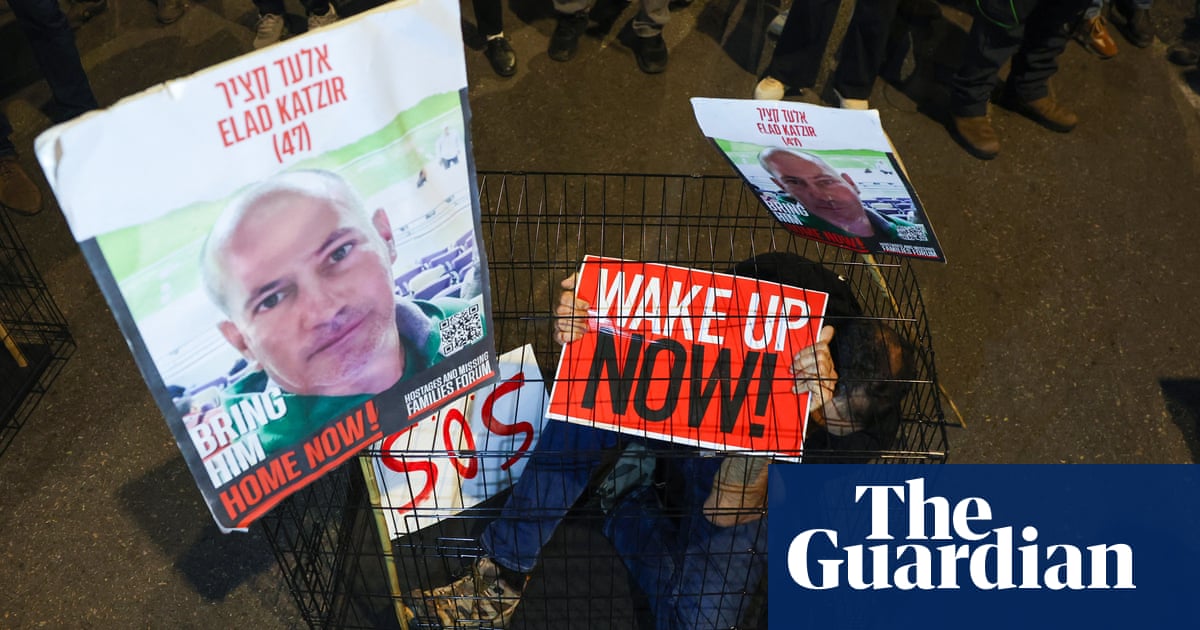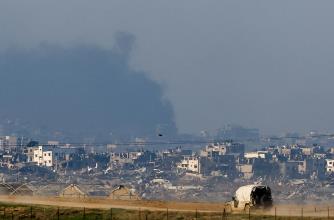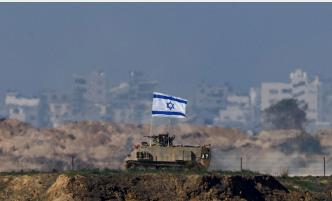
Hopes for a ceasefire in Gaza and de-escalation on the boundary between Israel and Lebanon were raised on Friday, as Israel’s intelligence chief was dispatched by the prime minister, Benjamin Netanyahu, to Qatar to resume stalled negotiations as Hamas reportedly told its Lebanese ally Hezbollah it had accepted a ceasefire proposal.
An official for the Lebanese group, which said on Thursday that it had fired 200 rockets into Israel in retaliation for a strike that killed one of its top commanders, also told Reuters that the group would cease fire as soon as any Gaza ceasefire agreement takes effect, echoing previous statements.
“If there is a Gaza agreement, then from zero hour there will be a ceasefire in Lebanon,” the official said.
The efforts to negotiate a ceasefire in Gaza and the release of hostages held for nearly nine months gained momentum this week as Hamas put forward a revised proposal outlining the terms of an agreement, and Israel expressed readiness to resume discussions that had previously come to a standstill.
The head of the Mossad intelligence agency, David Barnea, travelled alone to Doha to meet Qatar’s prime minister, Mohammed bin Abdulrahman al-Thani, to study proposals from Hamas to pause the nearly nine-month war, the Kan public broadcaster reported, citing senior Israeli officials.
He returned to Israel after an initial meeting, and negotiations will resume next week, Netanyahu’s office said late on Friday.
The United States appears to hold high expectations regarding the recently resumed contact between Israel and Hamas, with the White House describing the latest Hamas ceasefire proposal as a “breakthrough” establishing a framework for a possible hostage deal.
‘‘I think the framework is now in place and we have to work out the implementation steps,” a senior US official said. “What we got back from Hamas was a pretty significant adjustment to what had been their position, and that is encouraging. We have heard the same from the Israelis.”
The main obstacle in negotiations until this week had been widely differing views on how the agreement would move from its first phase to its second.
The first phase involves the release by Hamas of elderly, sick and female hostages during a six-week truce, an Israeli withdrawal from cities in Gaza, and the release of Palestinian detainees held by Israel.
The second phase would involve the release of all remaining hostages as well as the bodies of those who have died, a permanent end to hostilities and a full Israeli withdrawal from the Gaza Strip. Phase three would mark the start of Gaza’s reconstruction.
The transition from the first to the second phase was to be negotiated during the first six-week truce, and the ceasefire would continue as long as good-faith negotiations continued, but Hamas wanted stronger guarantees over the path to a permanent ceasefire.
Netanyahu had publicly cast doubt on whether that would happen, vowing to complete the destruction of the group, which had run Gaza for nearly two decades before it launched its surprise attack on southern Israel on 7 October.
A Palestinian official close to the internationally mediated peace efforts told Reuters the new Hamas proposal could lead to a framework agreement if it is embraced by Israel.
He said Hamas was no longer demanding as a pre-condition an Israeli commitment to a permanent ceasefire before the signing of an agreement, and would allow negotiations to achieve that throughout a first six-week phase.
The White House said Biden and Netanyahu had on Thursday discussed the response received from Hamas on the possible terms of a deal, and that Biden had welcomed Netanyahu’s decision on resuming the stalled talks “in an effort to close out the deal”.
A source in the Israeli negotiating team told Reuters: “There’s a deal with a real chance of implementation.”
A Gaza ceasefire could also allow for the de-escalation between Hezbollah and Israel on the Lebanese boundary. Hezbollah has declared its attacks on Israel to be in support of Hamas and indicated its willingness to halt its assaults if a ceasefire is reached in Gaza.
A Hamas delegation headed by the group’s deputy leader, Khalil al-Hayya, briefed Hezbollah leader Sayyed Hassan Nasrallah about the latest developments at a meeting in Beirut, the sources said.
Its deputy secretary general Naim Qassem on Friday publicly indicated that the group is not anticipating a full-scale war with Israel, but remains prepared for any extreme scenarios, in an interview with Russian outlet Sputnik.
“The possibility of expanding the war is not at hand at the moment but the organisation is prepared for the worst,” he said.
Mothers of Hamas-held hostages demonstrating in Tel Aviv’s Habima Square urged Israeli leaders to make an agreement. “There is right now a deal on the table,” said Shira Albag, the mother of 19-year-old Liri Albag, calling on the prime minister to “show leadership and courage and sign it off”.
One of the main obstacles to the negotiations within Israel is the far-right faction of the Netanyahu coalition government. The national security minister, Itamar Ben Gvir, issued a warning about potentially exiting the coalition during a highly charged security cabinet session on Thursday evening.
According to media reports in Israel, Ben Gvir criticised Netanyahu for engaging in private discussions with the defence minister, Yoav Gallant, and top security officials, painting the cabinet as merely a superficial facade.
“I want to make it abundantly clear, prime minister, that if you choose to act unilaterally, the consequences are solely your own to bear, and you will find yourself standing alone. I did not receive half a million votes to partake in a government where key security decisions are made outside the collective,” he was quoted as saying.












